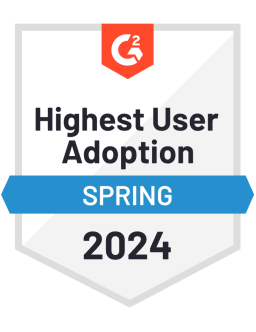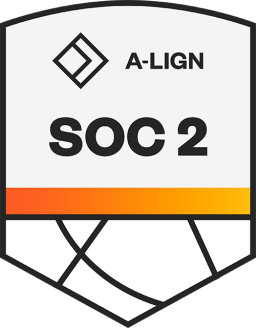Whether you’re a freelance social media marketer or work for an agency, you need to know how to create a social media proposal if you want to turn prospects into clients.
Writing a social media proposal is both an art and a science. You need to be creative to stand out. At the same time, you need to follow a strict process to be effective.
In this article, we’ll look at how exactly you can do that.
What is a social media proposal?
A social media proposal is a document where you propose specific social media services to a potential client. In the proposal, you explain your skills, establish your expertise, and identify how they will benefit potential customers. It’s very much like a business proposal. The document includes your deliverables, including your proposed social media strategy, should the prospect decide to hire you.
Contrary to popular perception, a social media proposal is not usually a contract. The contract comes later, assuming you land the job after submitting your proposal. If you convince your prospect to hire you, your proposal can form the basis on which you will create your contract.
Where can you use a social media proposal?
Writing and submitting a social media proposal is part of the sales process. If you look at a customer experience funnel, the proposal is at the line before the purchase stage:
This is the stage at which a potential client is aware of you and is considering hiring you. With the social media proposal, you hope to give the prospect that nudge so they will move down the funnel and convert.
In order to make sure that you gather as many proposal requests as possible, it’s a good idea to position yourself as a thought leader in your respected industry. This all starts with marketing and can be done through blogging, podcasting, building an online course, public speaking, social media, or a number of other ways.
5 steps to writing winning social media proposals
Since the goal is to get prospects to hire your services, you need to know how to write winning social media proposals. In this section, we’ll look at the steps you need to follow to convince prospects you’re the solution they are looking for.
1. Know your prospect’s business and social goals
You can’t convince someone to hire you if you don’t know anything about them. Employers hire people they believe will fulfill the company’s needs. It’s exactly the same with freelancers and agency teams. If you don’t know those needs, how can you convince them you’re perfect for the job?
This is why research is vital, including conducting a social media audit. You’ll need to learn all there is to know about your prospect. Here are a few questions you should try to answer:
What are their business goals?
What are the challenges they’re looking to address?
Did they make any attempt to address these challenges before now?
What are their social media goals? Do they want to increase customer engagement? Or increase followers and profile visits?
How are they currently using their social media accounts? What areas are underperforming? What areas are performing well?
You have all the necessary resources at your disposal. You’ll find the answers to many of these questions online. Your prospect’s website will tell you more about their business. Their official social media accounts are also a treasure trove of data, and a tool like Socialbakers can help you mine that data to show how the business is doing compared to its competitors.
Learn as much as you can so you can craft a social media proposal that specifically addresses your prospect’s pain points.
2. Determine your potential client’s audience
It’s not enough to know who your prospect is. You have to know your prospect’s intended audience, too, to ensure your proposed social media strategy will speak to their target market. This will also ensure you propose the right social media platforms and mediums to use. If you know where the prospect’s target audience is, you’ll know where your prospect should be putting their time, attention, and money.
You can get a holistic understanding of your prospect’s target audience by finding out the following information about them:
Socio-demographics: What is their age range? Their gender?
Location: Where do they live? Is it an urban or a rural area?
Psychographics: What are their values? Their preferences?
Behavioral patterns: How frequently do they access their social media accounts? What do they like reading? This will help you know when to post on social media.
Goals: What are the positive things the target audience wants to achieve? Goals can be professional and personal, and they may or may not relate to your prospect’s products.
You can use the same strategies I mentioned earlier to know your prospect’s target market. So take a look at your potential client’s existing social media accounts, and scout their followers. If your prospect doesn’t have those accounts yet, then ask your potential client directly. Check out your prospect’s website, too.
Based on what you find, create your prospect’s audience personas. Buyer personas are detailed representations of your prospect’s target audience.
These audience personas will serve as your guide as you craft your proposed social media marketing strategy. You’ll get plus points for hard work from your prospect, too!
3. Scout your prospect’s competition
It’s good to check out the social marketing strategies of your prospect’s competitors. This will help you determine which tactics work and which don’t in their industry. You can use a free content inspiration tool to find posts, and this research can inspire you and underpin your social media proposal for your prospect.
When checking your prospect’s direct competitors’ social media accounts, note the posts that perform well and those that don’t.
https://www.facebook.com/skittles/photos/10159604977368475
Look at the language used in those posts, too. Is it casual or too serious? If there are visuals in the posts, what types of visuals are used? The idea is to get as much information as you can so you can follow the best practices that allow those brands to reach their social media goals.
4. Find out your prospect’s budget and timeline for the campaign
Even if you propose the best social media marketing strategy, it won’t work if it doesn’t align with your prospect’s budget and deadline. That’s why you need to know these vital pieces of information before you create your social media proposal. The best way to ascertain this information is by asking your prospect directly.
Craft a social media marketing strategy based on the information you get. Make sure you include costing and estimated delivery time for your proposed strategy. If you’re transparent about where your prospect’s money will go and what they can expect to get in return (and when), you increase your chances of landing the job.
5. Write, write, write
Now that you’ve done your research, it’s time to collate everything into your social media proposal. Your proposal should be broken down into roughly these sections:
Introduction: This is where you set expectations. You must show your prospect that you understand their needs and how to fulfill them.
Scope of work: Define your deliverables. Will you be doing content creation and curation? Are social media analytics included? What about engaging and responding to followers? Be as clear and specific as possible.
Milestones and deadlines: This is where you explain how you will measure the success of your campaign. For example, the first milestone could be “Increase Facebook engagement by x over the next six months”.
Testimonials: Include testimonials from former clients to show your prospect that you will deliver. Be selective and choose the ones that are most likely to help you land the job. Case studies are great, too. Make sure you define what you did in each campaign and what results you achieved.
Agreement terms: This is where you propose your fees. It’s best to include a breakdown here so that your prospect knows exactly what they’re paying for which services.
Next steps: This is where you lay out what happens next if your prospect accepts the proposal.
Use clear and simple language in your social media proposal. Remember that you’re the expert, but your prospect might not be so don’t include jargon or technical language.
One more pro-tip: proofread your proposal before you submit it. Typos and spelling mistakes can undermine your credibility and make your proposal look sloppy. Furthermore, to make things easier for yourself, you can use a proposal template and only edit client related bits before sending.
The Takeaway
Social media marketers need to know how to write effective social media proposals. These documents are what turn prospects into paying customers. Without strong proposals, social media marketers will have a difficult time landing clients.
In a nutshell, here are my top tips for winning proposals:
Learn everything you can about the prospect, their business, and their goals before you start.
Learn about your prospect’s target audience and draw up audience personas.
Ensure your proposal aligns with your prospect’s budget and deadline.
Scout out the competition and use it to inform and inspire your proposal.
Write a killer proposal, and check it thoroughly before you send it.
Now it’s over to you. Do your research, put in the time and the effort, and pay attention to the details. You’ll soon reap the benefits.
Editor's Note: This article was originally published on socialbakers.com. Any statistics or statements included in this article were current at the time of original publication.
























